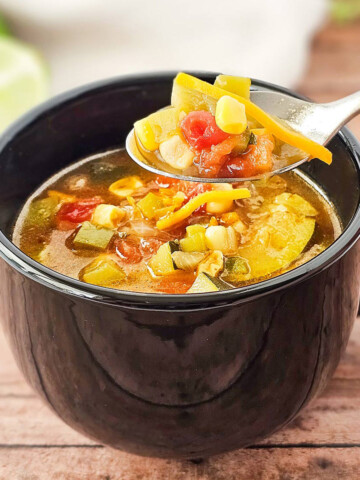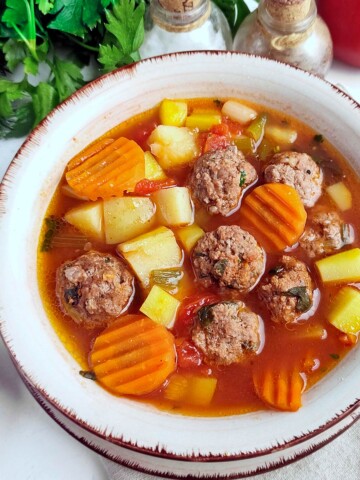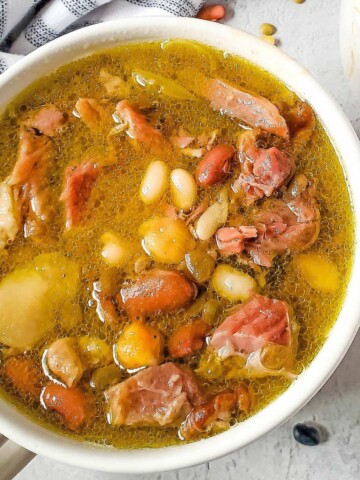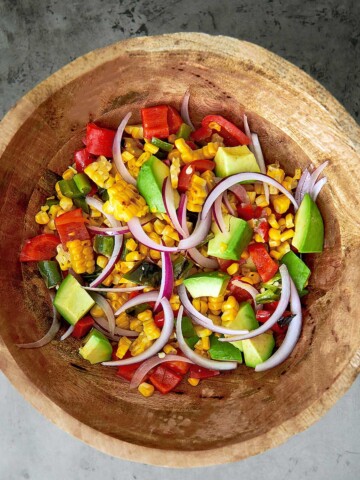New Zealand littleneck clams, also called cockle clams are harvested in the clear unpolluted waters of New Zealand's Southern Pacific Ocean. All harvesting, processing and packaging operations comply with the New Zealand government, USFDA and EU standards. They are listed as a "good" alternative on the Monterey Bay Seafood Watch program. Their beautiful green shells drew me in at the seafood counter and I decided to give them a try. I have never cooked live clams before but I am familiar with cooking live mussels. I bought three pounds of live, wild caught New Zealand clams to use in my clam chowder recipe.
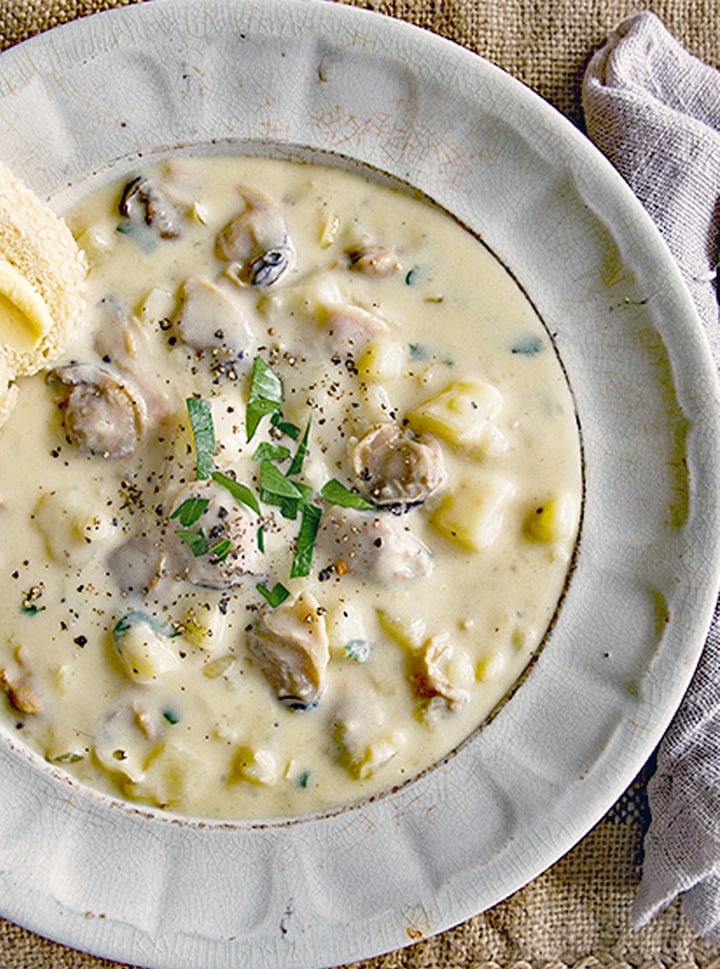
Fresh mollusks, like mussels and clams, must be cooked live if not purchased frozen or canned. Have the person behind the counter make sure that you are getting live clams. If they do not close their shell when touched or rinsed in cold water, they should be discarded. They can also contain a lot of sand and grit so they must be cleaned before cooking. When you get them home, immediately remove them from the plastic bag, and soak for at least 30 minutes in a bowl of cold water. This will allow to clams to release the sand. Do not pour through a colander because the sand will have settled to the bottom and you'll be pouring it back over the clams. Pick the clams out with your fingers or tongs and discard the water. Use a firm brush to scrub the outside of the shell to remove any additional sand or debris.
If you are using the clams in a recipe where they will remain in the shell, they are ready to use. I was making chowder so I needed to steam the clams until the shells opened and I could remove the clams. I did this by bringing a couple of inches of water to a full boil in a large stock pot with a steamer basket in the bottom. Drop the clams into the pot and immediately cover with a lid. Allow the clams to steam for about three minutes. Remove the opened ones and continue steaming the remaining clams until the shells open. Sometimes hard-shelled clams take a bit longer than other clams to open. If they don't open, discard them.
Place the opened shells on a baking try until cooled and easy to handle. At this point you will need to pull the clam out of the shell. Some may have come out of the shell on their own. Clams are attached to the shell walls by two muscles which can be tough and chewy. You don't want them in your chowder. Most of the time when you remove the clam from the shell the larger of the two muscles will remain attached to the shell wall. If it doesn't, remove it with your fingers. The smaller muscles is not as big a problem and can be left in the clam. In this picture you can see the white muscle attached to the shells after the clam is removed.
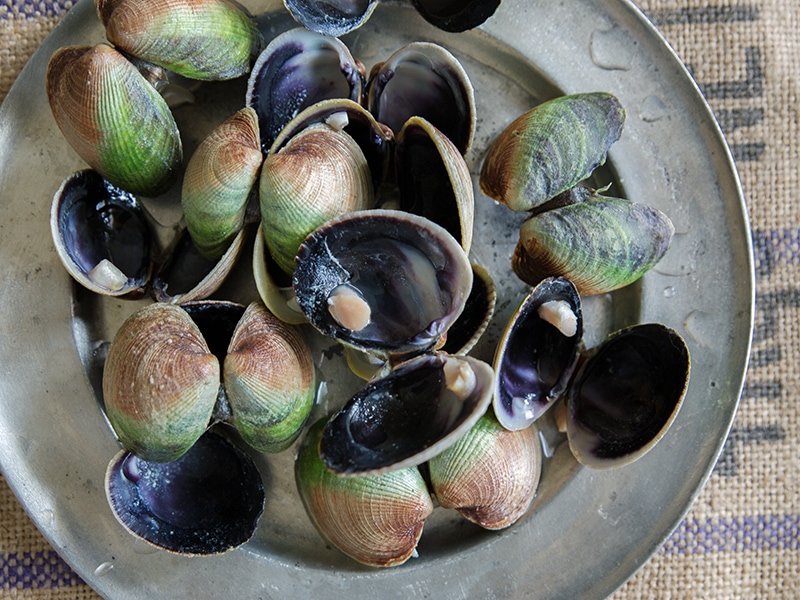
This picture will give you an idea of the size and shape. They look like teeth and nobody wants clam chowder with teeth in it!
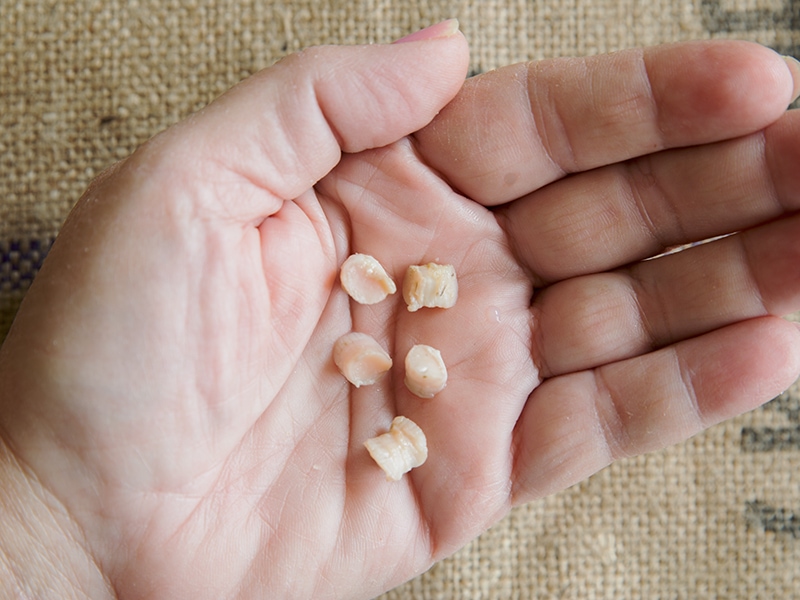
I left the oysters whole since they were small but you can chop them for more clam flavor.
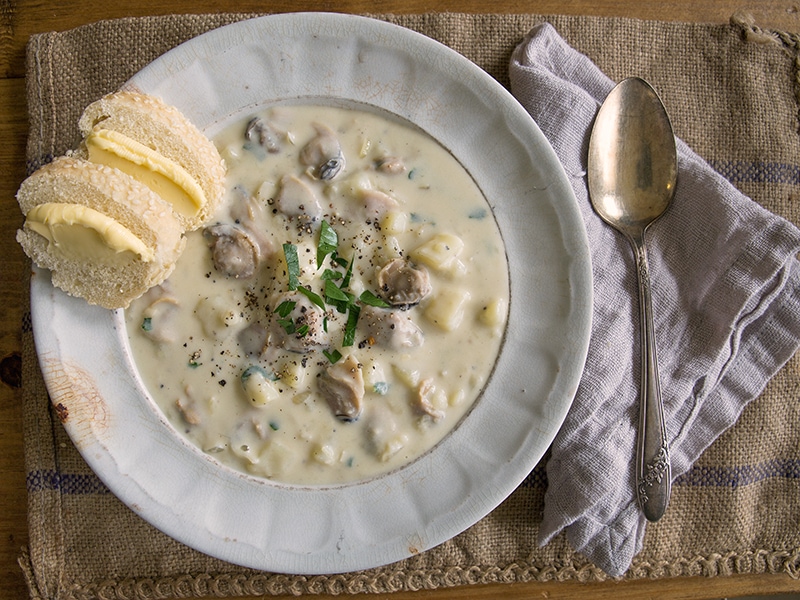
This chowder is best eaten with a big spoon and a couple of slices of buttered bread.

Yum. If I was served this exact chowder in a fancy restaurant I would leave a big, fat tip!
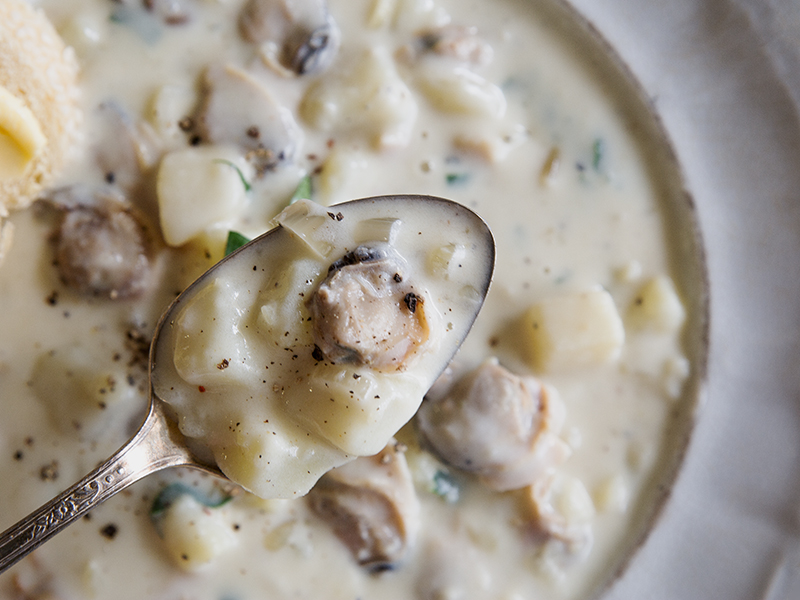
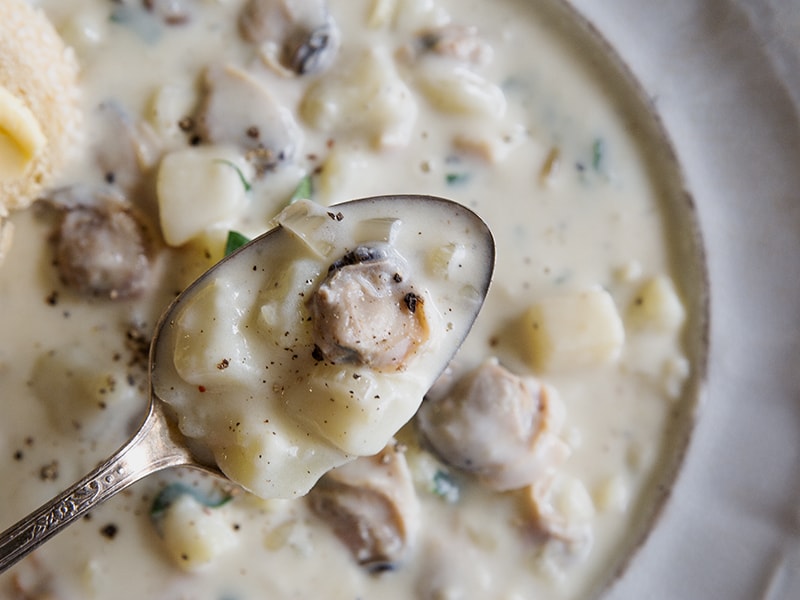
Equipment
- Firm brush for scrubbing clams
- Steamer basket
- Large stock pot
- Mesh strainer
- Non-Stick skillet
Ingredients
- 3 pounds live littleneck clams in shells
- 24 ounces bottled clam juice
- 4 tablespoons butter
- 3 large shallots finely diced
- 2 cloves garlic minced
- 2 tablespoons flour
- 2-3 large Yukon gold potatoes peeled and diced into ¾" cubes
- ⅓ cup heavy cream
- 2 tablespoons chopped fresh parsley
- Salt and pepper to taste
Instructions
- Soak clams in cold water for 30 minutes. Pick the clams out of the water and discard the water the clams were soaking in. Rinse the clams again in cold water and scrub the shells with a firm brush.
- Place a steamer basket in the bottom of a large stock pot and add a couple of inches of water. Heat until the water reaches a full boil. Dump the clams into the pot and immediately cover with a lid.
- Steam the clams for at least three minutes and then open the lid. Pull out the clams whose shells have opened and place them on a shallow baking tray to cool. Leave the unopened clams in the steamer and put the lid back on.
- Steam them for an additional two minutes then check again for opened shells. If the shells haven't opened after 7-8 minutes of steaming, discard those clams.
- Line a mesh strainer with three layers of fine cheesecloth and pour the liquid from the pot through into a big bowl to catch any remaining grit. Repeat as necessary.
- Pick the clams out of the shells, removing the large white muscle. Leave the clams whole or chop if desired. Set aside.
- Melt the butter in a non-stick skillet. Add the chopped shallots and garlic and cook on low heat until translucent. Set aside.
- Peel and cube the potatoes. Pour the clam juice into the pot with the clam cooking liquid. Heat the clam juice until boiling, then add the potatoes to the pot. Cook the potatoes until tender but still intact. Add the cream.
- Re-heat the butter and shallots until the butter is bubbling. Sprinkle the flour onto the bubbling butter and stir to mix. Cook the roux for two minutes without browning it.
- Pour the roux into the pot with the chowder broth and stir until it thickens. Add the clams and the chopped parsley to the pot.
- Continue cooking on low heat until the clams are heated through. Salt and pepper to taste and serve pippin hot with crusty buttered bread.

